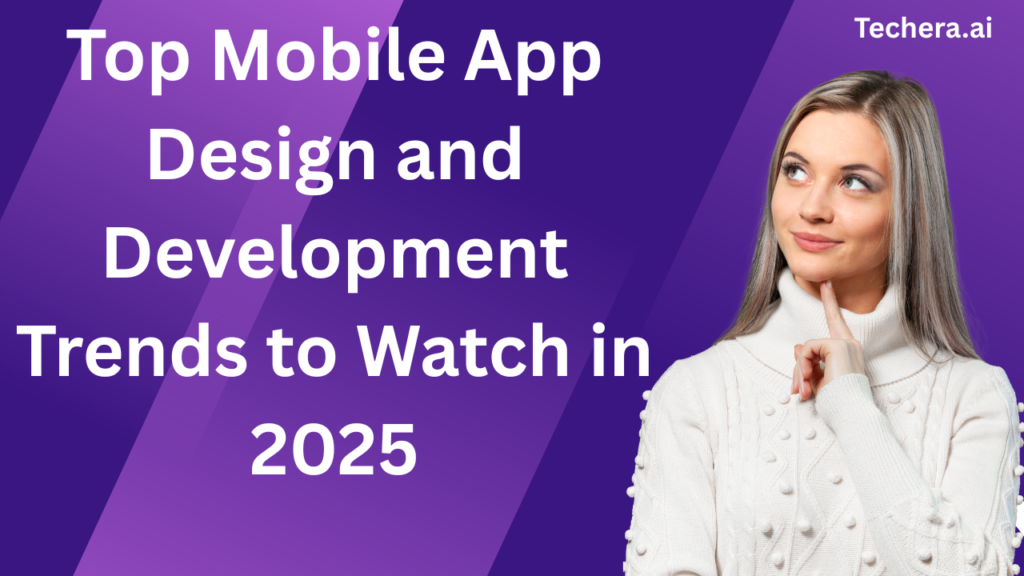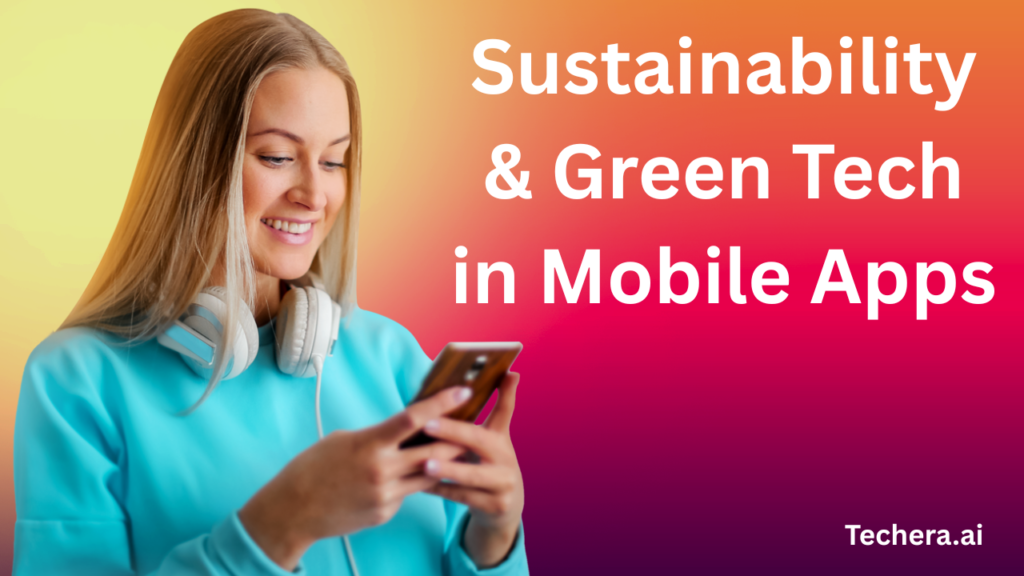
Mobile app design and development in 2024 is shaped by trends like minimalism, AI-powered personalization, immersive AR experiences, gesture-based navigation, dark mode, and cross-platform consistency. These innovations aim to simplify user journeys, boost engagement, and deliver flexible, secure, visually appealing apps that meet evolving user expectations in a dynamic digital landscape. Focus keyword: mobile app design and development.
Introduction
The Top Mobile App Design and Development world doesn’t wait. As we approach 2025, new technologies, shifting user expectations, and fast-changing hardware are rewriting the rulebook. If you want your app to stand out — not just survive — you’ll need to watch certain trends closely. Let’s dive into what’s coming and what you should plan for.
The Mobile App Design and Development Landscape Going into 2025
Devices are becoming more powerful. Global internet access is spreading. Users are more demanding about speed, privacy, design, and personalization than ever before. Also, emerging hardware—foldables, ultrawide screens, AR glasses—is changing how apps are used. All this sets the stage for some exciting shifts in mobile design and development.
Trend 1 – Hyper-Personalization via AI and ML
Personalization isn’t just nice to have — it’s expected.
- Predictive UX: Apps will increasingly anticipate user needs. For example, predictive shortcuts, adaptive home screens, or dynamic content layouts that adapt based on user behavior.
- Adaptive Interfaces: Interfaces that change depending on context — time of day, usage patterns, location. Dark mode automatic toggles, minimalist UI when battery low, etc.
- Tailored Content Delivery: News, IOS/Android widgets, content feed ordering — all tuned per person, with AI/ML analyzing preferences, past behavior, etc.
Trend 2 – Voice, Conversational, and Multimodal Interfaces

Touch alone is no longer enough.
- Voice frontends: More apps will support voice commands, voice search, in-app audio interactions.
- Multimodal UX: Combining voice + visuals + touch. For example: app listens, shows context, user confirms actions via touch or voice.
- Conversational UX: Chatbots, voice assistants that are more “human,” with natural language understanding, emotional tone detection, context retention.
Trend 3 – Immersive Experiences – AR, VR, Mixed Reality (MR)
Reality is becoming more fluid.
- Mixed Reality (MR) will combine AR & VR so users can interact with virtual objects in real spaces.
- Use cases: virtual try-on in shopping, interactive learning in education, immersive training in professional fields (medical, military).
- Tools & SDKs advancing: frameworks like Unity, Unreal, Apple’s Vision Pro SDK, ARCore/ARKit enhancements.
Trend 4 – Edge Computing and Offline-First Applications
Users expect performance, even with spotty internet.
- Edge computation means doing more processing on device or near user rather than fully in cloud. Faster response, lower latency, less dependency on network.
- Offline-first apps: apps that work even when disconnected — caching, local storage, sync later. Especially important in regions with unreliable connectivity.
Trend 5 – 6G Preparations & Ultra-Fast Connectivity
While 5G is still rolling out in many places, the conversation around 6G is heating up:
- Higher speeds, ultra-low latency, massive device density.
- Apps that stream holograms, real-time XR collaboration, remote operations: these become more possible.
- Designing apps with network variability in mind becomes essential — performing well on 4G/5G/soon-6G.
Trend 6 – Cross-Platform and Modular Architectures
Efficiency, maintainability, and speed to market.
- Frameworks like Flutter, Jetpack Compose, SwiftUI, React Native continue to evolve.
- Modular architecture: separating features into modules/libraries so updates, testing, and scaling become easier.
Trend 7 – Sustainability & Green Tech in Mobile Apps

Users are increasingly conscious of environmental impact. Apps will reflect that.
Trend 8 – Security, Privacy & Ethical Design
Trust is non-negotiable.
- Data minimization: only collect what’s necessary.
- Transparent privacy policies, in-app disclosure of data use.
- Biometric authentication, encryption by default.
- Ethical design: avoiding dark patterns, respect for user choice, inclusive and fair designs.
Also Read : Mobile App Design and Development: Key Steps for Creating Successful Apps
Trend 9 – Wearables, IoT & Ambient Computing
Apps will not just live in phones.
- Integration with wearables (smartwatches, AR glasses, earbuds) becomes tighter: health metrics, voice + sensor data.
- Ambient computing: devices “aware” of environment and user state; apps respond passively (e.g. adjusting notifications, showing info based on context).
- Smart home, automotive OS integration too: apps will need to “play nice” across platforms and devices.
Trend 10 – Dark Mode, Neumorphism, and New Visual Styles
Design aesthetics continue evolving.
- Dark mode remains popular — less eye strain, more battery savings on OLED/AMOLED screens.
- Neumorphism, Glassmorphism, Soft UI, layered shadows, blur effects — refined for usability, balancing style & performance.
- Minimalism, clean layouts, more whitespace. mobile app design and development UI becomes more breathing room, less clutter.
Trend 11 – Low-Code / No-Code, Citizen Developers
Building apps will be more accessible.
- Platforms empowering non-developers to build or maintain simple apps or internal tools.
- Enterprises using no-code/low-code for rapid prototyping, internal dashboards, MVPs.
- Governance, code quality, security will be vital in low-code ecosystems.
Trend 12 – PWAs & App-less Experiences
Less need to download sometimes.
- Progressive Web Apps (PWAs) becoming more capable: offline, notifications, nearly native look & feel.
- Instant apps, streaming apps, or apps delivered via cloud (e.g. cloud gaming) reduce friction for users.
- App bundles, modular installs: install only what user needs.
Trend 13 – Micro-Interactions and Motion Design
Small details matter.
- Subtle animations, gesture feedback, transitions that help guide users’ attention.
- Motion used not just for beauty but for clarity: indicating steps, confirming actions, reducing confusion.
- Keeping animations optimized to not hurt performance.
Conclusion
2025 promises to be a year of refinement and expansion. The fundamentals—security, usability, performance—remain critical. But the edges are pushing: immersive experiences, hyper-personalization, ethical design, sustainability, and devices beyond phones. If you build mobile apps, start aligning now: pick the trends that match your audience, experiment, iterate — and stay curious. That’s how you’ll not just keep up, but lead.
FAQs
1. Which trend will impact mobile apps the most in 2025?
Hyper-personalization and immersive reality (AR/MR) are likely to have the biggest impact, especially as hardware and AI get better.
2. Should I invest in building an AR/MR app right now?
If your audience or product aligns (retail, education, training, entertainment), yes. But start small, test, and ensure the hardware ecosystem supports it for your users.
3. Is low-code/no-code reliable for serious mobile app projects?
For simple apps, internal tools, or MVPs — absolutely. But large scale, high-performance, secure apps usually still need custom code.
4. How do I make sure my app is sustainable and green?
Optimize for battery, reduce unnecessary network calls, use dark mode, lean designs, choose green hosting, and measure resource usage.
5. How can I prepare my team for these trends?
Stay informed through tech conferences, continuous learning, adopt flexible tech stacks, experiment with prototypes, encourage cross-disciplinary collaboration between designers, developers, security and UX experts.

